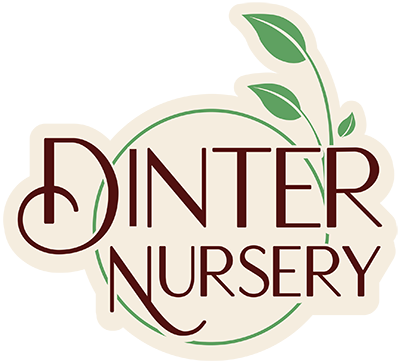Small Fruits Pollination
Your guide to small fruit pollination.
Small fruit pollination is simple, and we break it all down. We’ll discuss what plants need a pollinizer (a plant that contributes pollen to fertilize another plant), what plants you can plant one of, and what plants benefit from a bit of help.
Cane fruits
All cane fruits are self-fertile but each flower does need pollen transferred by a pollinator for optimal fruit set. Cane fruits include:
Blackberry
Boysenberry
Loganberry
Marianberry
Raspberry
Tayberry
Blueberry
The most commonly grown blueberries in our climate are northern highbush blueberries (Vaccinium corymbosum). These varieties can be self-fertile, but the berries will be underdeveloped and slow to ripen without exchanging pollen with another plant. For ideal fruit set and large, evenly-ripening berries, cross-pollination by bees from another variety that is blooming at the same time is essential. Our favourite trio of blueberries for overlapping bloom time is Duke, Bluecrop and Elliot.
Plants should be spaced 3 to 4 feet apart for ideal cross-pollination.
Cranberry and Lingonberry
Cranberry plants (Vaccinium macrocarpon, Vaccinium oxycoccos) are self-fertile and require insects for pollination. Multiple plants will increase pollination by attracting insects when plants are in flower.
Lingonberry (Vaccinium vitis-idaea) are similar to cranberries in that they are self-fertile, but multiple plants increased pollination.
Currants
Black currants (Ribes nigrum) are partially self-fertile but will produce a larger crop when planted with a different black currant cultivar. There are some varieties of black currants that require another variety for cross-pollination.
White and red currants (Ribes rubrum) are self-fertile.
Elderberry
American elderberry (Sambucus canadensis) are self-fertile but will produce more reliably when planted with another Sambucus canadensis variety.
European elderberry (Sambucus nigra ‘Korsor’) is somewhat self-fertile but for higher yields plant another variety of Sambucus nigra.
Goji
Goji berries (Lycium barbarum) are self-fertile and do not require another plant to produce fruit.
Gooseberry
Gooseberries (Ribes uva-crispa, Ribes hirtellum) do not require another variety planted for fruit production as they are self-fertile. These plants can have heavier fruit set when planted with another variety of gooseberry.
Goumi
Goumi (Elaeagnus multiflorai) is self-fertile as flowers are hermaphroditic so only one plant is needed to produce fruit.
Grape
Grapes are self-pollinated so a second vine is not needed. Flowers are pollinated by wind and insects.
Honeyberry
Honeyberry (Lonicera caerulea) are not self-fertile and require a different variety of the same species and blooming period, as a pollenizer to produce fruit. The closer a plant is to its pollenizer the better. It is important to note that though the terms honeyberry and haskap are used interchangeably, generally honeyberries refer to later flowering Japanese cultivars (which are more likely to coincide with pollinators in our climate). Haskaps frequently refer to earlier flowering Russian varieties that would not be suitable as a pollenizer for honeyberries.
Jostaberry
The jostaberry (Ribes × nidigrolaria), a cross between a black currant and gooseberry, is self-fertile and does not require a pollenizer to produce fruit.
Jujube
The flowers of this small fruit tree are hermaphrodite (have both male and female organs) and are pollinated by insects. The plant is said to be self-fertile but not reliably so planting two different cultivars together (‘Li’ and ‘Lang’) is recommended.
Kiwi
Hardy kiwi (Actinidia arguta) bears female and male flowers on separate plants a male plant is required to pollinate a female plant. ‘Issai’ is a self-fertile variety available.
Fuzzy kiwi (Actinidia deliciosa) bears female and male flowers on separate plants a male plant is required to pollinate a female plant. ‘Jenny’ is a self-fertile variety available.
If self-fertile plants are not producing high enough yields the addition of a male variety can increase pollination.
Saskatoon berry
Saskatoon or Serviceberry (Amelanchier alnifolia) are self-fertile; they can set fruit on their own without the need for another nearby plant, but planting a second Saskatoon cultivar in close proximity can significantly increase their yield.
Seabuckthorn
Seabuckthorn (Hippophae rhamnoides) plants produce male flowers and female flowers on separate plants so two plants are necessary for cross-pollination to occur. Generally 1 male plant produces enough pollen for 6 to 8 female plants.
The Basic Science
What even is a fruit? A fruit is an edible reproductive body of a plant. The evolutionary function of a fruit is to spread the seeds or to attract “dispersers”.
For a fruit to form, a flower needs to be pollinated, which requires pollen. The male anther produces pollen and is transferred to the female stigma (atop the style). When this happens, the growth of the pollen tube is activated, the ovules are fertilized by the sperm, and the ovary begins to transform into the fruit. It is the ovary and the surrounding tissue that eventually becomes the fruit we eat.
Many blossoms have both male and female flower parts (making them hermaphroditic), while others bear female flowers and male flowers on separate plants. For plants that are not self-fertile, or require cross-pollination, the pollen of one cultivar (or sex) needs to come into contact with the stigma on another cultivar (or sex).





